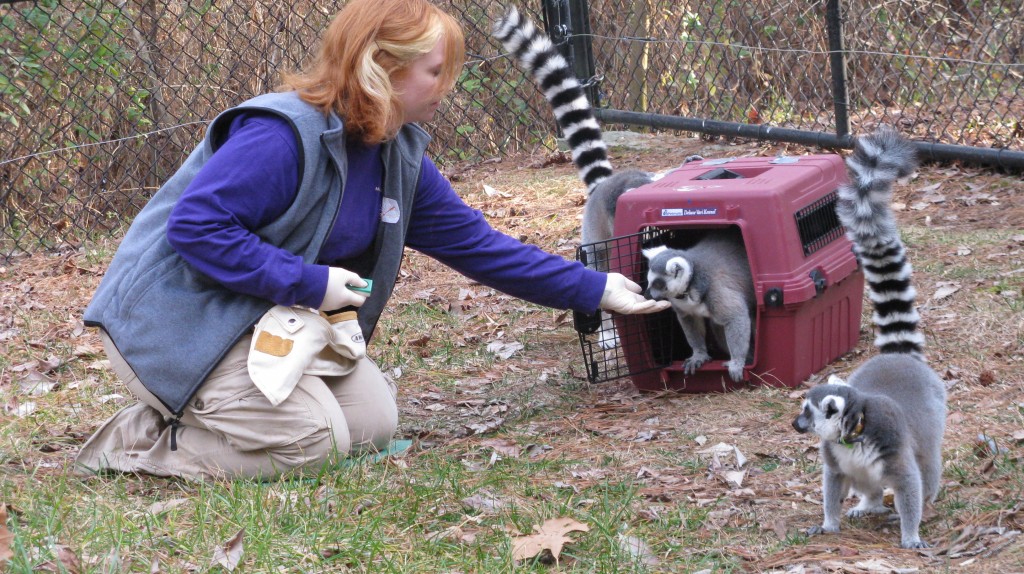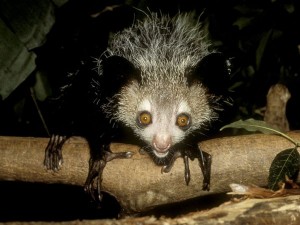Often times while I’m training the Ring Tailed Lemurs I over hear visitor’s comments. “Oh look- she’s feeding the…. Raccoons? Monkeys? What is that animal?” At the end of each session I ask, any guests that managed to stay interested long enough, if they have any questions. Typically by this point they have read all the exhibit signs and know that the cute little animals with looooong tails are Lemurs. But what is a Lemur?

The word Lemur-which means ghost- because of their nocturnal behavior, reflecting eyes, and vocalizations, describes a small monkey-like mammal. In fact these creatures can be quite elusive and there are probably several species yet to be discovered.

Lemurs are in the order Primates- just like you and me and monkeys and apes. But not as advanced- you could call them pre-monkeys. They are in the suborder Strepsirhini and you may hear them called Prosimians. The suborder Strepsirhini includes: lemurs, bush babies, lorises, and the aye aye. The other suborder under Primates is Haplorhini which include: monkeys, baboons, gibbons, orangutans, chimps, gorillas, and humans. You may hear us called Anthropoids as well. Strepsirhines are distinguished from Haplorhines by a number of physiological and morphological features of the inner ear, blood circulation and digestion.

So here’s the deal. Stepsirhinies appeared first, these early primates were nocturnal and aboreal and many current day lemurs still are (with exceptions of course) By the time Haplorhines arrived, lemurs had already drifted over to Madagascar and any remaining lemurs were quickly wiped out, too much competition with the higher more developed and advanced monkeys. Lemurs were isolated on the island and with little competition and predation they were able to inhabit all the different environments the island had to offer, there are lemurs in the moist tropical rainforest as well as the dry deserts areas of the island. This gave them the ability to develop into the many different and unique lemurs species there are today. Lemurs only live on Madagascar and the Comoro Islands- that means they are endemic. (Native to a specific region or environment and not occurring naturally anywhere else)

Enter humans…dun dun dun…2,000 years ago when humans first arrived on the island they literally sent 15 species of lemur into extinction and pretty quickly. All of those 15 species were larger than the current day lemurs. There was even a gorilla sized lemur around 400 pounds- that’s a Lightning (our donkey) sized lemur! The biggest threat to lemur population today is still human encroachment. All lemurs are considered endangered or threatened to become endangered, in fact many are critically endangered, including our own Red Ruffed Lemurs.
What makes a lemur different than a monkey?
Check back soon for my next post, I’ll describe the differences between lemurs and other primates.
